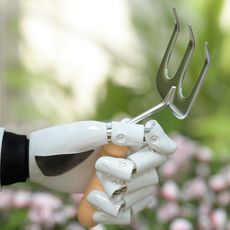Xylella Fastidiosa Of Apricots – Treating Apricots With Phony Peach Disease
Xylella fastidiosa of apricots is a serious disease also referred to as phony peach disease due to the fact that it is commonly found in peach trees too. This disease does not kill the tree immediately, but results in reduced growth and fruit size, detrimental to commercial and home growers alike. How can apricots with phony peach disease be managed? Read on to find out about apricot xylella treatment.
Phony Peach Disease Damage
First observed in Georgia around 1890, apricots with phony peach disease (PPD) have a compact, flat canopy-- the result of shortening of the internodes. Foliage tends to be a darker green than normal and infected trees usually flower and set fruit early and hold their leaves later in the fall than those uninfected. The result is smaller fruit combined with a considerable reduction in yields. Twigs on diseased apricots not only have shortened internodes but an increase in lateral branching. Overall, the tree appears dwarfed with compact growth. As the disease progresses, the wood becomes dry and brittle accompanied by dieback. Trees that develop symptoms of Xylella fastidiosa prior to bearing age never produce fruit. PPD is spread through root grafting and by leafhoppers. Apricots afflicted with phony peach disease can be found from North Carolina into Texas. The milder temperatures of these regions foster the insect vector, the sharpshooter leafhopper. Similar forms of the bacterium cause plum leaf scald, Pierce’s disease of grapes, citrus variegated chlorosis, and leaf scorch in trees (almond, olive, coffee, elm, oak, oleander, and sycamore).
Apricot Xylella Treatment
There is currently no cure for PPD. Options are limited to the spread of the disease. To this end, any diseased trees should be removed. These can be easily identified by the reduced shoot growth in late summer. Remove the trees prior to pruning which can make the disease difficult to identify. Also, as to pruning, avoid pruning in the summer which encourages growth that leafhoppers are attracted to. Keep the areas surrounding the apricot trees weed free to reduce habitat for leafhoppers. Remove any plum trees, wild or otherwise, near the apricot trees.
Gardening tips, videos, info and more delivered right to your inbox!
Sign up for the Gardening Know How newsletter today and receive a free copy of our e-book "How to Grow Delicious Tomatoes".

Amy Grant has been gardening for 30 years and writing for 15. A professional chef and caterer, Amy's area of expertise is culinary gardening.
-
 Best Indeterminate Tomatoes: Flavor-Packed Varieties For Fresh Harvests All Summer Long
Best Indeterminate Tomatoes: Flavor-Packed Varieties For Fresh Harvests All Summer LongIndeterminate tomatoes are vining varieties that fruit all season. Discover their distinctive features and how to choose the best type to grow in your garden.
By Bonnie L. Grant
-
 The Dangers Of AI For Gardening – How To Know What’s Real When It Comes To Your Garden
The Dangers Of AI For Gardening – How To Know What’s Real When It Comes To Your GardenThings aren’t always what they seem when it comes to using AI for gardening. Be discerning when relying on AI for accuracy, and take the time to do research.
By Teo Spengler
